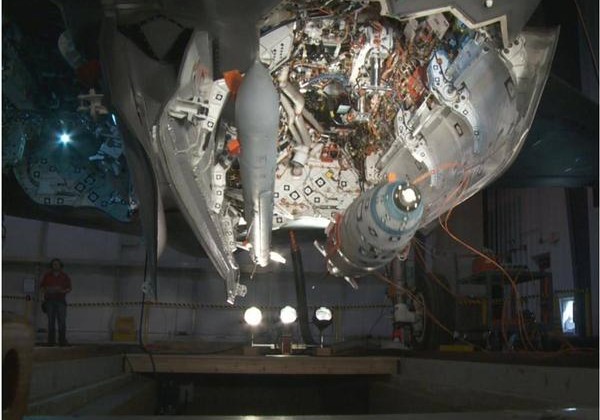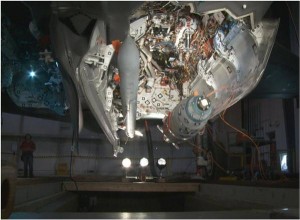F-35B Stealth Fighter Drops a Bomb


An inert, instrumented GBU-32 GPS-guided bomb falls from F-35B test aircraft BF-3 into a test pit March 13. (Photo courtesy of Lockheed Martin)
After ejecting a 500-pound bomb from F-35B test aircraft BF-3, the test team took a collective breath, and watched as it hurtled toward the concrete deck.
Coming to rest in the foam covering the pit floor, the March 29 “pit drop” marked the end of two weeks of testing nine different weapons combinations inside the Joint Strike Fighter’s two internal weapons bays.
Weapons pit-drop testing collects data to measure stresses on the airframe and adjacent stores, ensures proper weapon and suspension equipment function, and validates the separation models for the munitions’ ejection characteristics, including trajectories and velocities.
From the cockpit, the pit drops demonstrated minimal effects of weapons launches from the F-35B’s left and right internal bays.
Testing included inert versions of the GBU-12 Laser-Guided Bomb, the 1,000-pound GBU-32 Joint Direct Attack Munition and the AIM-120 Advanced Medium-Range Air-to-Air Missile.
More weapons testing on the F-35B and F-35C carrier variant is ongoing at Naval Air Station Patuxent River. Current test events including pit drops, captive carry and instrumented weapons environmental flights, lead up to flight separation testing scheduled for later this year.
The F-35B variant of the Joint Strike Fighter for the U.S. Marine Corps is capable of short take-offs and vertical landings for use on amphibious ships or expeditionary airfields to provide air power to the Marine Air-Ground Task Force. The F-35B is undergoing test and evaluation at Naval Air Station Patuxent River prior to delivery to the fleet.
Source: PEO(JSF) Public Affairs























